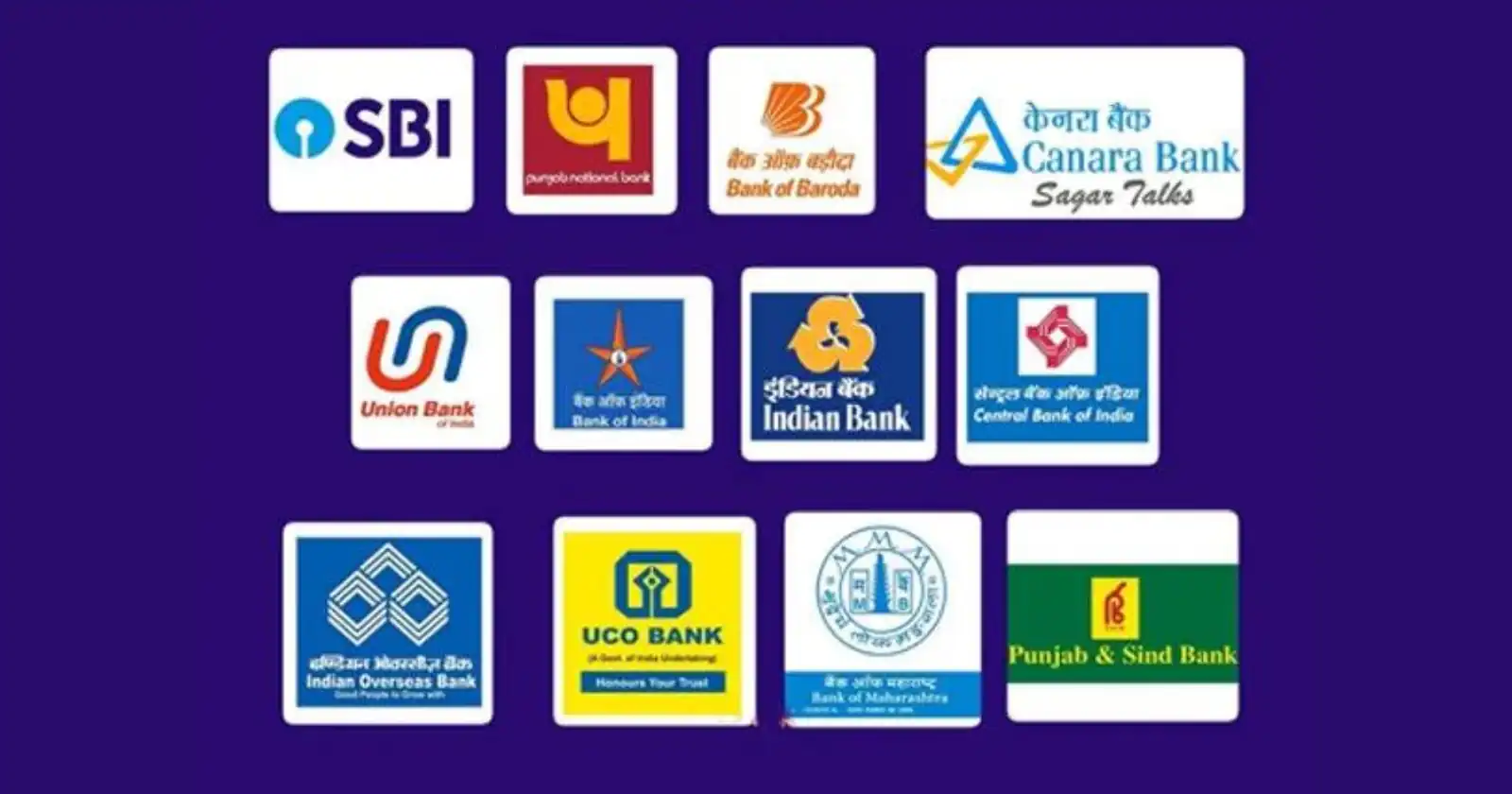Nationalised Bank in India: National banks or famously known as Public Sector Banks play an important role in providing a cheap and easy banking solution to the citizens of India. Today in this article we’ll discuss all National Banks of India and we are sure that you might have an account in one of these banks. The National Banks or the Public Sector Banks are owned and operated by the government of India and their primary goal is service of citizens besides making profit. They play an important role in providing banking services to rural India and to the poor sections of the society. Since their inception some of the Banks have grown so much that they are currently one of the biggest Banks in India. The Nationalised banks play an important role in the Indian Economy. So let’s have a look at these national banks.
Nationalised Bank in India 2024
Nationalisation of banks is one of the biggest steps in the economic development of India. Currently, there are 12 public sector banks in India and RBI is the central authority that manages all the banking operations in India. 10 public sector banks were merged into 4 banks . The merger will help boost the economy from a six-year low while increasing productivity and efficiency and reducing the number of bad loans and NPAs. As of now, there are 12 public sector banks in the country. Below is the complete list of all the national banks in India. We have given a brief introduction about all of them.
National Banks in India:-
1. State Bank of India

SBI is the largest commercial bank in the country and has a history of 200 years. SBI is the largest in terms of assets, deposits, profits, branches, customers and employees etc. Government of India’s stake in SBI is more than 50% .
2. Punjab National Bank

The bank was established to help Indians. PNB is the first indigenous bank, which started its operations from Lahore on April 12, 1895 , and had an authorized capital of Rs 2 lakh and working capital of Rs 20,000. Now Oriental Bank of Commerce and United Bank of India have merged into it.
3. Indian Bank

Indian Bank was established on 15 August 1907 with the Swadeshi movement. With the merger of Allahabad Bank it has a presence in India with 9786 touch points including 2872 domestic branches, 3892 ATM/BNAs and 3022 BCs.
4. Canara Bank

Established in 1906 as ‘Canara Bank Hindu Permanent Fund’ by the late Shri Ammembla Subba Rao Pai, a philanthropist, this small seed grew into a limited company as ‘Canara Bank Limited’ in 1910 and after nationalization in 1969. Canara Bank was formed. Now, it has merged with Syndicate Bank.
5. Bank of Baroda

Bank of Baroda is an Indian state-owned international banking and money services company headquartered in Vadodara (earlier referred to as Baroda) in Gujarat, India. The bank was endorsed by the Prince of Baroda, Prince Sayajirao Gaekwad III in the twenty Gregorian calendar month 1908.
6. Indian Overseas Bank
The bank was established on 10 February 1937 by Shri M.C.T.M. Chidambaram Chettiar, a pioneer in many fields. The bank was founded by him with the main objective of specializing in foreign exchange trading in banking to take the bank across the world
7. UCO Bank
Established in 1943, UCO Bank is a commercial bank and an initiative of the Government of India. Its Board of Administrators includes state representatives of the Government of India and depository financial institutions of India as well as eminent professionals such as accountants, management consultants, economists, businessmen, etc.
8. Bank of Maharashtra
Maharashtra has been a progressive region and banking activity in this region also started long ago. Traditionally speaking, the Bank of Mumbai, established in 1840, was the primary depository financial institution in a geographical area.
9. Punjab and Sind Bank
It was in the year 1908 when a humble idea of upliftment of the poorest of the poor of the country was born with the vision of stalwarts like Bhai Veer Singh, Sir Sunder Singh Majitha, and Sardar Tarlochan Singh with the birth of Punjab and Sind Bank. The Bank was established on the principle of social commitment to help the weaker section of the society in their economic efforts to raise their standard of living.
10. Bank of India
Bank of India was established on 7 September 1906 by a group of eminent businessmen of Bombay. The bank remained under public ownership and control until July 1969, when it was fully nationalized along with thirteen other banks. Starting from a single workplace in Bombay, with a paid-up capital of Rs 50 lakh and fifty workers, the Bank has grown over the years and blossomed into a powerful establishment with a strong national presence and large international operations.
11. Central Bank of India
Established in 1911, the Financial Organization of India was the primary Indian bank entirely controlled and managed by Indians. The establishment of the Bank was the final realization of the dream of the Bank’s founding father, Sir Sorabji Pochkhanawala. Sir Firozesh Mehta was the primary Chairman of the first ‘Swadeshi Bank’.
12. Union Bank of India
Established on 11 November 1919, the bank now operates through more than 4200 branches across the country. In 2021, it has been merged with Andhra Bank and Corporation Bank. The Bank’s core values of prudent management without ignoring opportunities are reflected in the fact that the Bank has shown uninterrupted profits during all its 96 years of operation.
So these were the 12 national banks in India that are currently working throughout the nation. Make sure to check them out.
